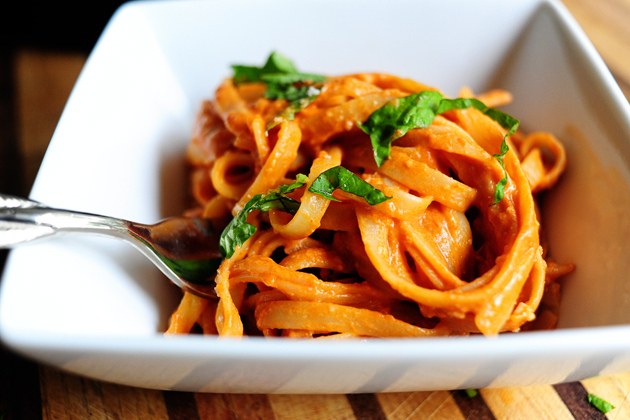You will need
- 1-2 onions;
- 3-4 cloves of garlic;
- 700-800 g of tomatoes in own juice;
- 400 g of spaghetti;
- 1/2 tsp dried oregano;
- 1/2 tsp dried marjoram;
- 1/2 tsp dried Basil;
- 1/2 tsp sugar;
- 40-50 g of grated Parmesan cheese;
- fresh Basil;
- vegetable oil for frying.
Instruction
1
Onions and garlic peel from the husk. Wash in cool running water. Finely shred. In a frying pan or skillet, heat vegetable oil (preferably olive). Put sliced onions and garlic. Fry on medium heat until Golden brown about 5 minutes, stirring occasionally so it doesn't burn.
2
Remove the tomatoes from the jar. Cut into small pieces. Put the pan in passeruem onion with juice from the jar. Salt. Add oregano, Basil and marjoram. Bring to a boil. Sauté for 8-10 minutes until, until the juice has evaporated and the sauce thickens. Cover to cover should not be. Add a little sugar to the sauce turned out sweet and left a sour taste of tomatoes.
3
Separately in a saucepan boil water. Season with salt, add 1 tbsp olive oil and place back spaghetti or other favorite pasta. Boil, stirring occasionally, until the state of al dente. Drain spaghetti in a colander.
4
Ready spaghetti, put in a saucepan for tomato sauce. Stir and simmer for about 1-2 minutes. Ensure that the pasta is not overcooked and became too soft. Add the finely chopped fresh Basil. Mix.
5
Pasta with tomato sauce, place on large plate. Sprinkle with grated Parmesan cheese. Garnish with a leaf of fresh Basil. Serve in combination with a salad of fresh vegetables.
Useful advice
Choose pasta made from durum wheat.
Pasta, cooked to a state of al dente, has a certain resistance when pressing on it with a fork. If the fault remains whitish cut – paste does not dovarenny. If it is too soft – overcooked. When cooking pasta always try it to taste. So you can more easily determine the state of readiness of the product. In addition, throw the pasta should be in already boiling water, not before.
Pasta, cooked to a state of al dente, has a certain resistance when pressing on it with a fork. If the fault remains whitish cut – paste does not dovarenny. If it is too soft – overcooked. When cooking pasta always try it to taste. So you can more easily determine the state of readiness of the product. In addition, throw the pasta should be in already boiling water, not before.
